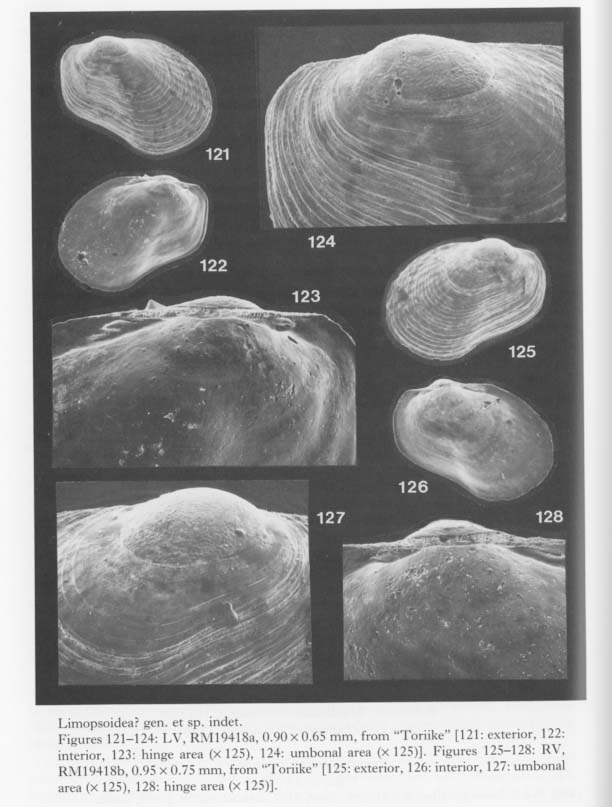Limopsoidea? gen. and sp. indet.
Figures 121-128

This species is represented by a number of dead specimens from the bottom sedi-ments of the submarine caves, namely, "Witch's House" (RM19417), "Wall Cave" (RM19587), "Toriike" (RM19418) of Shimoji Islet, "W-arch" (RM19419) and "Cross Hole" (RM19420) of Irabu Islet, Miyako Islands, and "Shodokutsu" (RM19421) of Ie Islet, Okinawa.
It has a minute translucent shell (smaller than 1.2 mm in length) revealing Musculus-like mytiliform outline with broadly concave antero-ventral margin, but seems to belong to the superfamily Limopsoidea instead of the Mytiloidea, because of the non-nacreous shell, the development of one or two tubercular prionodont teeth on the anterior and posterior parts of the hinge plate, and a subcentrally placed low-triangular ligament pit below the umbo. Unlike the species of Musculus, the anterior part of shell is not ornamented by radiating threads. It is also characterized by persistent denticles of provinculum, entire inner margin, several weak radial ribs on the posterior surface, and large, oblong and pockmarked Pd I ranging 200-230 µm in maximum diameter.
So far as we are aware, no comparable species has been described. It is likely that the present species represents an unnamed genus, but its taxonomic position is still obscure.
This species is common in many submarine caves of the Ryukyu Islands (Ie, Shimoji and Irabu Islets). According to our preliminary observation, it also occurs commonly in "Chandelier Cave" of Palau Islands, and "Balicasag Cave" off Panglao Islet of Bohol Island, the Philippines.